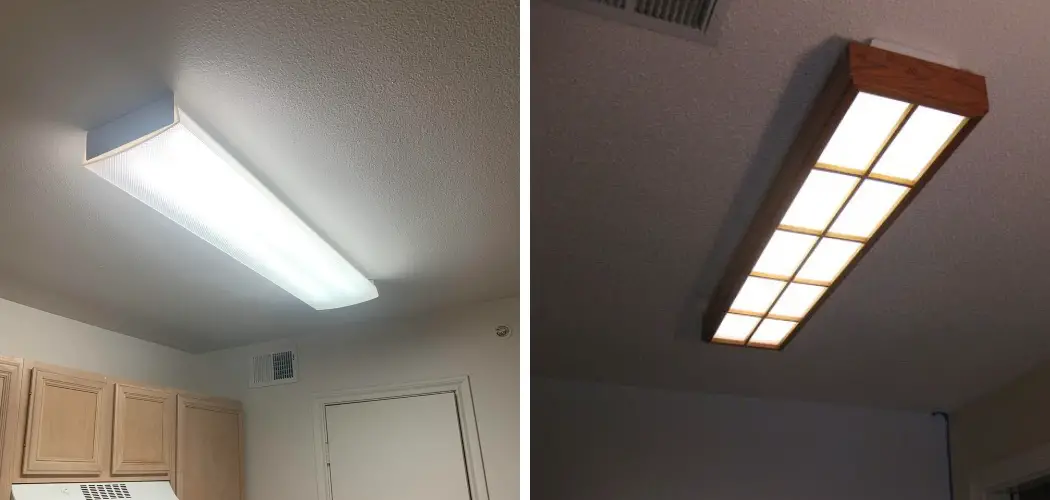Are you tired of the harsh white light given off by fluorescent lights? Do you wish there was a way to make them look more appealing and less clinical? Well, you’re in luck!
Fluorescent lighting, while energy-efficient and cost-effective, can sometimes cast a stark, uninviting glow that affects the ambiance of a room. Fortunately, there are several creative strategies for softening this light and enhancing the visual appeal of spaces that rely on fluorescent fixtures. From decorative diffusers and color temperature adjustments to strategic room design and additional lighting sources, this guide explores various methods to make fluorescent lighting more aesthetically pleasing and comfortable for both working and living environments.
Join us as we illuminate how to make fluorescent lights look better, welcoming glow.
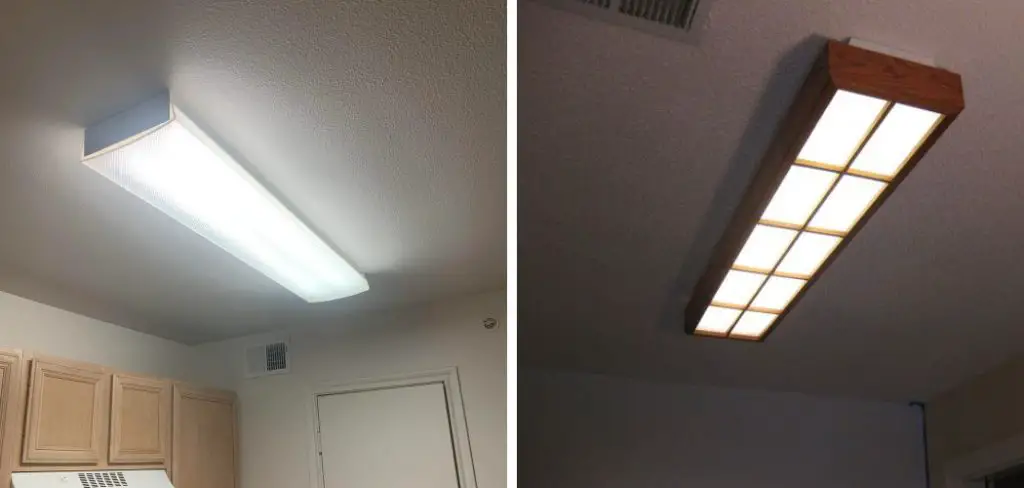
What are the Importance of Lighting in Interior Design?
Lighting is a crucial element in interior design that can make or break a room’s overall aesthetic and atmosphere. It serves both functional and decorative purposes, providing illumination for tasks, highlighting architectural features, and setting the mood and tone of a space.
When it comes to fluorescent lighting, its industrial appearance can be jarring and uninviting in residential and commercial settings. Therefore, it’s essential to consider how to make fluorescent lights look better in order to enhance the overall design and create a more pleasant environment.
Proper lighting not only impacts the visual appeal of a room but also has psychological effects on its inhabitants. Soft, warm lighting can promote relaxation and comfort, while bright, cool lighting can increase productivity and focus. With fluorescent lighting, finding the right balance is crucial in creating a visually appealing and comfortable space.
What Will You Need?
Before we dive into the various methods of making fluorescent lights look better, let’s go over what you will need to get started.
- Decorative Diffusers: These are translucent panels that can be placed on top of fluorescent light fixtures to soften and disperse the harsh light.
- Color Temperature Adjustment Kits: These allow you to change the color temperature of fluorescent lights, providing a warmer or cooler glow.
- Additional Lighting Sources: This could include floor and table lamps, string lights, or even candles to add warmth and ambiance to the room.
- Room Design Elements: Simple changes in furniture placement or decor can also help minimize the impact of fluorescent lighting.

With these materials on hand, you’ll be well-equipped to transform your fluorescent-lit space into a more visually appealing and comfortable environment.
10 Easy Steps on How to Make Fluorescent Lights Look Better
Step 1. Use Decorative Diffusers
One of the simplest ways to soften the harsh light of fluorescent fixtures is to use decorative diffusers. These panels are available in various colors, patterns, and materials, allowing you to customize the look and feel of your space. Simply place the diffuser on top of the fixture, and it will disperse the light, creating a softer glow.
Step 2. Adjust Color Temperature
Fluorescent lights come in different color temperatures that can affect the overall ambiance of a room. Typically, cooler colors (4100K-5000K) are used in workplaces for increased productivity, while warm colors (2700K-3000K) are used in residential settings for a cozy and inviting feel. Depending on your preference, you can switch out the bulbs or use color temperature adjustment kits to achieve the desired warmth or coolness.
Step 3. Add Soft Lighting Sources
To balance out the harsh light of fluorescent fixtures, consider adding additional soft lighting sources around the room. Floor lamps, table lamps, and even string lights can introduce a warmer, more inviting light into the space. These alternative light sources can create layers of light, allowing you to adjust the ambiance according to different needs or times of the day. By strategically placing these lamps, you can reduce the reliance on fluorescent lighting and enhance the room’s overall mood.

Step 4. Incorporate Room Design Elements
Room design elements can play a significant role in minimizing the harshness of fluorescent lights. Consider the color of your walls; softer, lighter hues can reflect light more naturally, reducing the starkness of the illumination. Additionally, using mirrors can help distribute light evenly across the room, creating a more balanced and pleasant environment. Strategic furniture and decor placement, such as curtains or plants, can also influence how light fills the space, making fluorescent lighting feel more integrated and less intrusive in your overall design scheme.
Step 5. Implement Light Dimming Solutions
Implementing a light-dimming system can greatly enhance the room’s ambiance for those dimmable fluorescent lights. Dimming allows light intensity adjustment according to the time of day or the specific needs of a task or mood. While not all fluorescent fixtures are compatible with dimming technologies, specific dimmable ballasts and bulbs are designed for this purpose. Adding a dimmer can make a significant difference, allowing you to customize the level of brightness and warmth in the room, fostering a more comfortable and adaptable lighting environment.
Step 6. Experiment with Task Lighting
Task lighting is a focused light source aimed at specific areas to enhance visibility for tasks like reading, cooking, or working on a computer. Integrating task lighting into spaces that rely heavily on fluorescent lights can improve functionality and add aesthetic appeal. Desk lamps, under-cabinet lights, and reading lamps are excellent examples of task lighting that can complement your main light source. By focusing light where it’s most needed, you can reduce the overall dependence on harsh fluorescent lighting, creating a more balanced and inviting atmosphere.
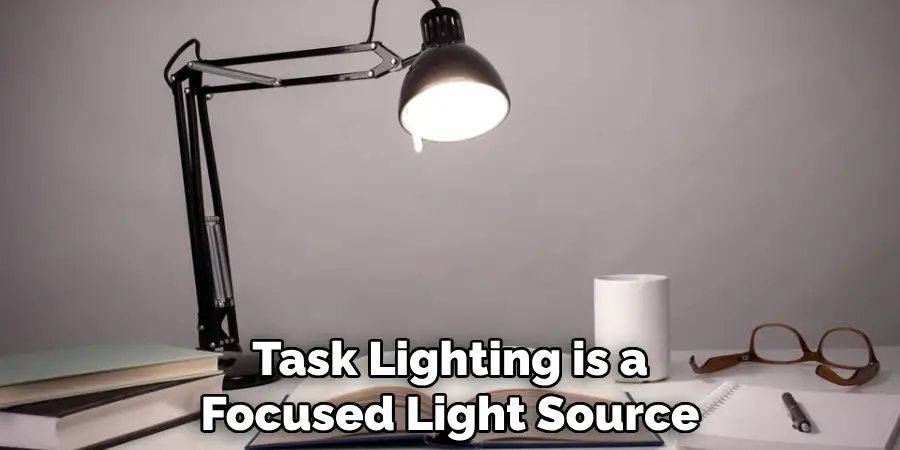
Step 7. Make Use of Natural Light
Capitalizing on natural light can significantly reduce the need for constant fluorescent lighting, creating a more harmonious and energy-efficient space. Position workspaces and seating areas close to windows to maximize daylight hours. Using light-colored curtains or blinds that diffuse sunlight softly into the room can also help increase the amount of natural light without the harsh glare. Natural light provides a more pleasant and accurate color rendition and offers health benefits, such as increasing vitamin D levels and improving mood.
Step 8. Play with Color and Texture
Incorporating different colors and textures into your space can also mitigate the harsh effects of fluorescent lighting. Soft, warm colors on walls and furnishings can absorb light rather than reflect it, reducing glare and softening the overall lighting effect. Textural elements like rugs, cushions, and drapes can add depth and warmth, further diffusing the light and creating a more inviting atmosphere. Experimenting with color schemes and textures can transform the feel of a room, making it feel less clinical and more like home.
Step 9. Upgrade to LED Lighting
If feasible, upgrading your fluorescent lights to LED (Light Emitting Diode) lighting can be a game-changer for improving the light quality in your space. LEDs provide a wide range of color temperatures, are more energy-efficient, and have a longer lifespan than traditional fluorescent bulbs. They emit light that is closer to natural daylight, which can significantly enhance the ambiance of any room. Additionally, LED lights do not produce the same flickering or buzzing noises associated with some fluorescent lights, making for a quieter and more comfortable environment. Installing LED lights can be a straightforward yet effective step towards creating a warmer and more inviting space.
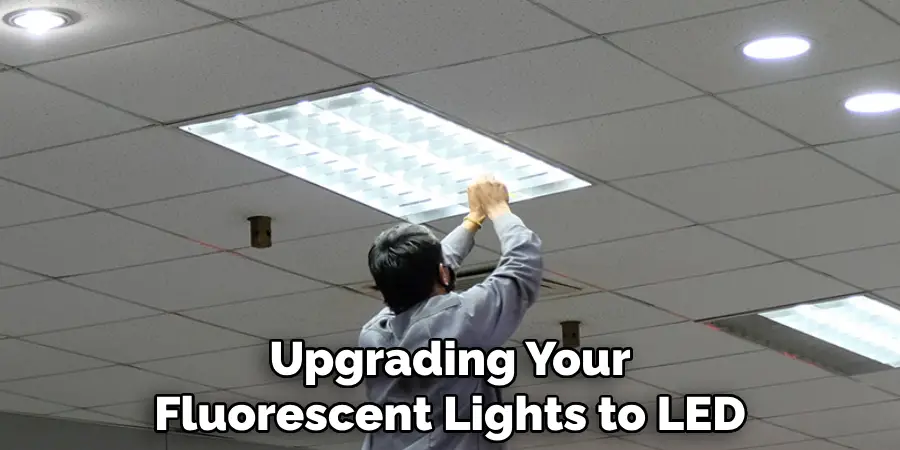
Step 10. Review and Adjust Regularly
Over time, the way you use your space may change, necessitating an adjustment to your lighting setup. Periodically reviewing the lighting in your room can help ensure that it continues to meet your needs and remains comfortable for both work and relaxation. Check the condition of your lamps and bulbs regularly, replacing any that are dimming or burnt out. Also, consider whether any new tasks or changes in room layout require additional lighting solutions. Staying adaptable and being willing to tweak your lighting arrangements can keep your space optimally illuminated and welcoming.
Following these steps can create a more balanced and harmonious lighting environment in any room. Whether working or relaxing, having the right lighting can make all the difference in how comfortable and inviting your space feels.
5 Additional Tips and Tricks
- Use Light Filters: Installing light filters can transform the harsh glare of fluorescent lights into a softer, more diffused light. These filters are available in various colors and designs, allowing for customization according to your space’s aesthetic.
- Incorporate Dimmers: By integrating dimmer switches, you can control the intensity of the fluorescent lighting. This adjustability can help create a more inviting and comfortable environment, especially when mood lighting is beneficial.
- Add Decorative Panels: Decorative light panels can be placed over fluorescent fixtures to enhance their appearance and the light’s quality. These panels come in various styles, from nature scenes to geometric patterns, offering a creative way to disguise the lights.
- Layer Lighting: Utilize additional sources of light, such as lamps or LED strips, to layer lighting in the room. This approach reduces the reliance on fluorescent lights as the sole light source, enabling a more balanced and pleasant ambiance.
- Install Colored Tubes: Replacing standard white fluorescent tubes with colored ones can instantly alter the mood and look of a room. Depending on the chosen colors, you can create a warmer or cooler atmosphere, adding a unique touch to the space.

With these additional tips and tricks, you can elevate the appearance of fluorescent lighting in your home or workspace. Experiment with different techniques and combinations to find the best for your specific needs and preferences.
5 Things You Should Avoid
- Avoid Overcrowding Light Sources: Placing too many lamps or additional light sources in close proximity to fluorescent lights can create an overly bright and uncomfortable environment. It’s important to strike a balance to ensure the space remains well-lit without becoming overwhelming.
- Don’t Use Low-Quality Filters: Opting for cheap or low-quality light filters can result in poor light diffusion and may not effectively reduce the harshness of fluorescent lighting. Investing in high-quality filters ensures better light quality and durability.
- Refrain From Using Mismatched Color Temperatures: Mixing light sources with drastically different color temperatures can create a disjointed and uninviting atmosphere. Aim for a cohesive color temperature throughout the space to enhance the fluorescent lighting’s aesthetic.
- Skip Using Reflective Decor Near Lights: Placing highly reflective objects or surfaces near fluorescent lights can amplify glare, making the environment less comfortable. It is advisable to use matte finishes and decor to minimize unwanted reflections.
- Avoid Neglecting Natural Light: While modifying fluorescent lighting, it’s easy to overlook the importance of natural light. Ensure that any changes do not block or diminish the access to natural light, which is vital for creating a healthy and appealing environment.
By avoiding these common mistakes, you can effectively enhance the appearance of fluorescent lighting and create a more comfortable and inviting space.
How Do You Make Fluorescent Lights Look Warmer?
There are several ways to make fluorescent lights look warmer. Here are a few suggestions:
- Use Warm Color Filters: Installing warm color filters on your fluorescent light fixtures can help soften the harsh, cool-toned light and create a warmer ambiance. These filters come in shades of amber, orange, and red that mimic the warmth of natural sunlight.
- Choose Warm Color Temperature Tubes: Fluorescent light tubes come in different color temperatures, ranging from cool (blue-toned) to warm (yellow and red-toned). Opt for a warm color temperature of around 2700-3000 Kelvin tubes to achieve a warmer glow.
- Layer Lighting with Warm Sources: As mentioned earlier, layering lighting is an effective way to reduce the reliance on fluorescent lights. Incorporate warm sources of light, such as incandescent or LED bulbs, to create a cozier and more inviting atmosphere.
- Install Dimmers: Dimmer switches allow you to adjust the intensity of the fluorescent lights, making them less harsh and cooler in color temperature. This can help create a warmer ambiance, especially when paired with warm color filters.
- Use Warm-Toned Decor: Adding warm-toned decor, such as rugs, curtains, and wall art, can help offset the coolness of fluorescent lighting. These elements add a touch of warmth to the space and can enhance the room’s overall aesthetic.
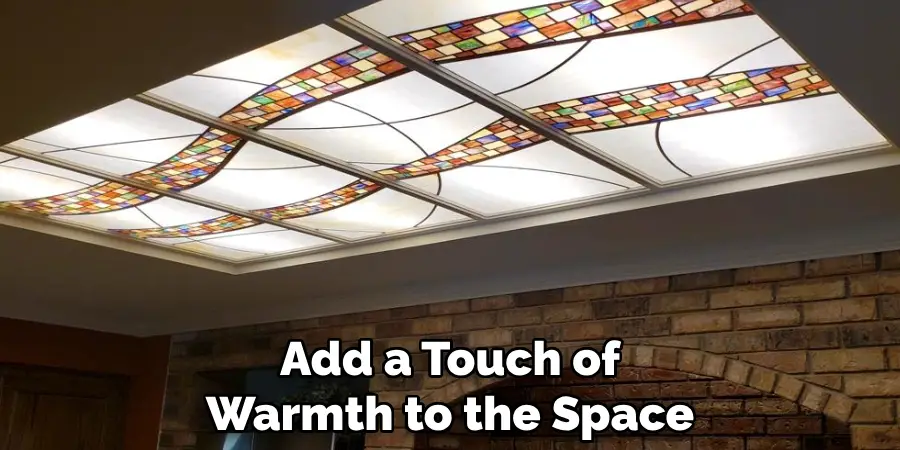
With these tips in mind, you can easily transform the appearance of fluorescent lighting and achieve a warmer and more inviting atmosphere. Experiment with different techniques and combinations to find what works best for your space.
How Do You Reduce the Glare on a Fluorescent Light?
Here are some ways you can reduce the glare on a fluorescent light:
- Install Light Covers: Light covers, or diffusers, can be placed over fluorescent fixtures to help soften and diffuse the light. These covers come in various materials and designs, such as frosted acrylic or textured plastic.
- Adjust Lighting Position: The placement of the lighting fixtures can also affect the amount of glare they produce. By adjusting the position or angle of the fixtures, you can minimize glare and create a more comfortable environment.
- Use Anti-Glare Filters: Similar to warm color filters, there are also anti-glare filters available for fluorescent lights. These filters have a matte finish that reduces reflections and glare, creating a more pleasant lighting experience.
- Opt for Matte Surfaces: As mentioned earlier, highly reflective decor can amplify glare from fluorescent lights. Choosing matte surfaces and finishes for furniture and decor can help minimize this issue.
- Utilize Natural Light: Finally, incorporating natural light into the space is an effective way to reduce the reliance on fluorescent lights and their glare. Position workstations or desks near windows to maximize natural light and minimize the use of harsh fluorescent lighting.
By implementing these strategies, you can effectively reduce the glare from fluorescent lights and create a more comfortable environment for work or relaxation.
Do Fluorescent Lights Need Covers?
The short answer is no. Fluorescent lights do not necessarily need covers. However, there are several benefits to using light covers or diffusers on your fluorescent fixtures.
- Reduce Glare: As mentioned earlier, light covers can help reduce glare and create a more comfortable environment by diffusing the harshness of fluorescent lighting.
- Improved Light Quality: Fluorescent light covers can also improve the overall quality of light in a space. They can help soften and warm up the cool-toned light, making it more pleasing to the eye.
- Energy Efficiency: Light covers can also make your fluorescent lights more energy-efficient by reducing their intensity and producing a softer, diffuse glow. This can help save on electricity costs and prolong the life of your light tubes.
- Aesthetics: Light covers come in various designs and patterns, making them a great way to add visual interest and enhance a room’s aesthetic. They can be used to create a cohesive look or add a pop of color to an otherwise dull space.
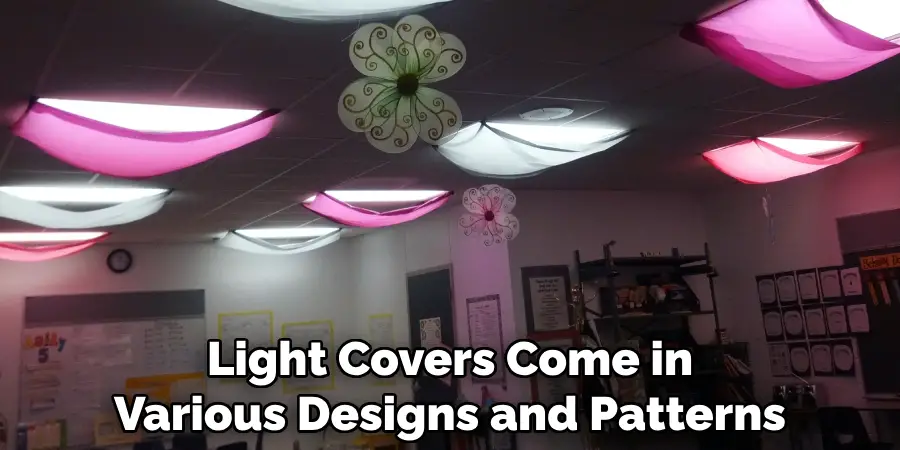
In conclusion, while not necessary, using light covers on fluorescent lights can provide several benefits and can be a worthwhile investment for your space.
Conclusion
In this guide on how to make fluorescent lights look better, we’ve explored several tactics for improving the aesthetics and functionality of fluorescent lighting, aiming to transform cold, harsh spaces into warm, inviting environments.
From the practical approach of using warm color filters and opting for light tubes with warmer color temperatures to layering your lighting for added depth and comfort, these strategies offer numerous ways to enhance your lighting setup. Implementing covers or diffusers can also significantly reduce glare while improving light quality, contributing to a more pleasant and productive ambiance.
Lastly, the integration of warm-toned decor and the strategic use of natural light can further elevate the appeal of any room. While fluorescent lights might not be everyone’s first choice for interior lighting, these thoughtful adjustments can come remarkably close to mimicking the warmth and comfort of natural sunlight.

